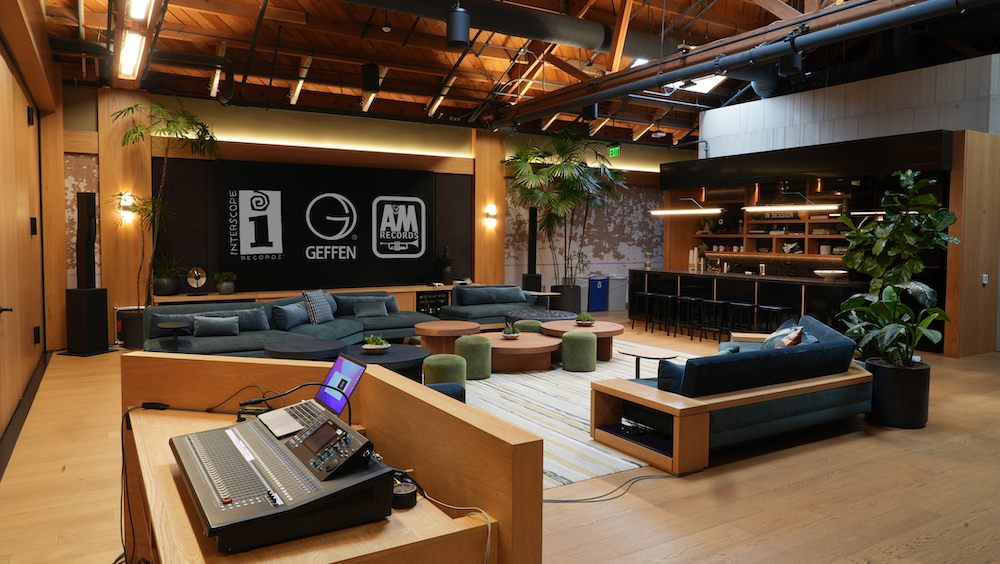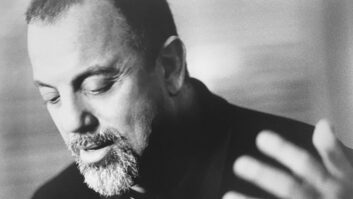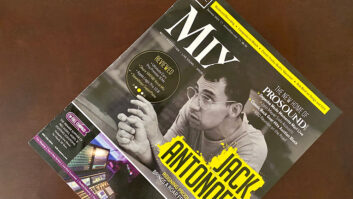
I have this one saying that I’ve found myself repeating over the years, in all types of conversations, both professionally and privately: “If you like music and you like technology, it’s a great time to be alive!” I can’t remember what led me to say it the first time, but I do know that I’ve meant it every single time I’ve said it. Because it’s true! We are living in an amazing time! And once in a great while, when I run into a genuine blast from the past, I’m reminded of just how amazing it truly is.
A few weeks ago, at a Thursday night dinner following the opening day of NAMM, I was reminded like never before, and it happened in a nanosecond, all because I happened to sit down next to Chas Sandford.
Pause. To provide context, we need to go back 24 hours, to the day before NAMM, to get a sense of just how advanced audio technologies are today. On Wednesday at noon, Mix senior writer Steve Harvey and I met at Universal Music Group’s relatively new 21fifteen Studios in Santa Monica. Inside are five state-of-the-art, multipurpose, analog-digital recording studios, a handful of high-octane writer/production rooms, stylish lounges, and a showpiece L-Acoustics 13.1.10 Dolby Atmos Performance Stage, all connected via a Dante backbone, so that all rooms can work directly with all rooms.
At some point, our host, Paula Salvatore, got a phone call and mentioned that it was her friend Chas Sandford, and he was in town from Nashville. I thought, “Hmm. I know that name.”
Next we head down Colorado Avenue for about a half-mile and turn right on Berkeley to drop in at Apogee Digital, where Betty Bennett was hosting a pre-NAMM party. Out back, composer Stephen Barton and scoring mixer Alan Meyerson were playing back tracks from a recent Jedi videogame on a Genelec near-field 7.1.4 Atmos playback system. In a room further back. Sonos was showing a variety of speakers and soundbars for Atmos at Home. Up front, in the Neve 80 Series-equipped main studio, Bob Clearmountain was playing back Atmos tracks from Bob Marley, the Band, Roxy Music and others. Technologies separated by 40 years working in harmony. Again, amazing!
Then there was a quick bus ride down to Anaheim, followed by a full day on the NAMM Show floor. There were immersive systems everywhere, even up on the second floor in the live sound demo rooms. There were headphones for multichannel playback. Software tools. Hardware options. Discussions of AI. Demonstrations of post-capture microphone pattern selection. Remote collaboration tools. Cloud-based processing and storage. Everything was new! Then I went to dinner and sat down in the Wayback Machine.
Rewind. I’d never met Chas Sandford, but I’d known about him since 1989, when I wrote my very first story at Mix. It was about a new organization called HARP, the Hollywood Association of Recording Professionals, which turned out to be made up mostly of big commercial recording studio owners in the Los Angeles area. They had approached the city, brought in lawyers, filed for proof of permits, riled up neighbors, called for zoning violations and were doing just about everything they could to get this home-based, professional recording studio, Secret Sound, shut down, and its owner, Chas Sandford, slapped with violations and fines.
He had what was then a novelty, a home studio. He wasn’t the only one, but he was the target. Home studios were new, and as I would later find out, Chas was way ahead of his time.
Fast Forward. After apologizing to Chas on behalf of the industry, we had a wonderful few hours of conversation over drinks and dinner, talking about technology, mutual acquaintances, musical highlights. We raced through the past 35 years of recording history, from his old Fairlight to his flirtation with ADAT and DA-88. From tape storage and playback reels to thumb drives and the cloud. From the genius of the original Euphonix consoles to the stunning capabilities of software synths and virtual instruments. From CD to DAT to SACD to streaming, from 5.1 to 7.1 to Atmos. From the late, great Stephen St. Croix’s 1993 prediction of mixing with goggles and gloves to the recent introduction of Apple Vision Pro. We have seen unbelievable changes, we agreed, and they just keep coming.
Today, Chas still has a home studio, though he now resides on a 52-acre spread in Franklin, Tenn., just outside of Nashville. He still has the SSL and one of the Otari 32-tracks, though he also has Pro Tools and remote collaboration software. A few weeks after NAMM, he called me to say that he stopped by 21fifteen Studios on his way back to Nashville to see Paula. And just that day he had ordered a PMC 7.1.4 Atmos monitoring system so that he could “play around with it a bit” and see what he could do with it creatively. After 35 years, his number is in my phone.
We can sometimes get so caught up in the here and now, at how amazing the world that we live in actually is, that we forget how fast this all happened. Sitting down next to Chas reminded me of that. And it energized me for the next 35 years to come. We do live in an amazing time!
—Tom Kenny, Co-Editor







